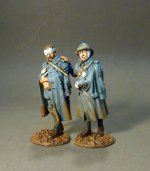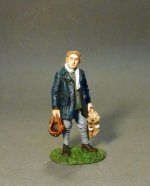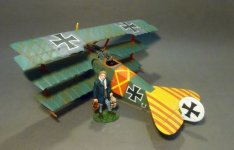THE GREAT WAR 1914-1918
Pigeons played an exceptional role in WWI and WWII. Pigeons were able to fly over enemy lines to send messages to allies all over the continent without the risk of having planes shot down or vehicles destroyed trying to relay that same message. Although many pigeons were killed in the process of transferring these messages, their success was great enough to merit the establishment of the Pigeon Corps in 1915. This group started with 15 mobile pigeon stations, or pigeon wagons, each with 4 birds and a handler and grew in size to over 400 men and 22,000 pigeons by the end of the war.
Pigeons had a small canister attached to their legs that allowed for a message to be inserted and transported back to command posts. This system proved to be the most effective means of transporting important messages as pigeons are incredibly fast fliers and the telegraph system that existed during the war was still not very efficient. Many of these pigeons carried messages that saved the lives of many soldiers, and as a result, were awarded medals for heroism and service to their respective countries. One pigeon named ‘Red Cock’ carried a message that contained the coordinates of a sinking boat that had been torpedoed back to its loft at the command post which allowed a rescue team to be dispatched in time to save the crew. For his services, ‘Red Cock’ was awarded the Dickin Medal for his bravery. This medal is the animal equivalent of the Victoria Cross which is awarded to individuals “for most conspicuous bravery, or some daring or pre-eminent act of valour or self-sacrifice, or extreme devotion to duty in the presence of the enemy.”
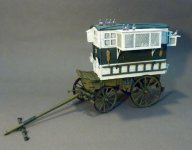
GWB-15
THE GREAT WAR, 1914-1918, MOBILE PIGEON LOFT,
(2pcs)
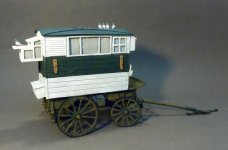
The Dickin Medal is the highest honor that an animal can be awarded for military service, and of the 55 Dickin Medals awarded to animals, 32 of them were awarded to pigeons. Another pigeon named ‘Cher Ami’ had an even more fascinating story. In 1918, 500 allied soldiers were trapped with no food or ammunition in France and were being bombarded by friendly fire. Many men were being killed and there seemed to be no hope of surviving the attack. As a last ditch effort a message was attached to a pigeon which was released and immediately shot down by the enemy. A second pigeon was released with a message and a suffered a similar fate. The final pigeon, ‘Cher Ami’ was then called for. As with the first two birds, a message was attached to its leg and it was released into the sky. ‘Cher Ami’ was instantly shot through the breast and fell to the ground; however, unlike his predecessors, ‘Cher Ami’ got back up and continued to fly another 25 miles, amidst a sky of bullets and the chaos of war, all the way back to headquarters. He delivered the message and was able to save the 194 remaining soldiers from certain death; however, his wounds consisted of a shot through the breast, a blinded eye and a nearly unattached leg. Miraculously, medics were able to save the bird and replaced his wounded leg with a wooden one. For his services, ‘Cher Ami’ was awarded the Croix de Guerre Medal, inducted into the racing pigeon hall of fame, and became the mascot of the Department of Service.
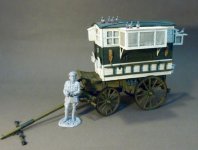
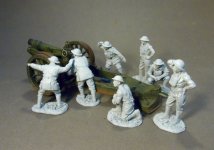
The Royal Garrison Artillery (RGA) was an arm of the Royal Artillery that was originally tasked with manning the guns of the British Empire's forts and fortresses, including coastal artillery batteries, the heavy gun batteries attached to each infantry division, and the guns of the siege artillery.
In the quagmire of trench warfare, it was finally realised that it was not the place for the artillery to be in the infantry line.
Henceforth the artillery would be positioned well behind the infantry battle line, firing at unseen targets, at co-ordinates on a map calculated with geometry and mathematics. As the war developed, the heavy artillery and the techniques of long-range artillery were massively developed. The RGA was often supported by the Royal Flying Corps (RFC) who had devised a system where pilots could use wireless telegraphy to help the artillery hit specific targets.
From 1914 the RGA grew into a very large component of the British forces on the battlefield, being armed with heavy, large-calibre guns and howitzers that were positioned some way behind the front line and had immense destructive power. The corps name was discontinued in 1924, when the RGA was re-amalgamated into the Royal Artillery
Ammunition supply to the Royal Field Artillery (RFA) and other field artillery units was normally the role of the Royal Artillery: that part of the Royal Regiment of Artillery which retained the Royal Artillery (RA) shoulder badges. However during the war the RGA, which had large numbers of men idling in fortified batteries around the World with little chance of seeing action, provided a draft of sub-units to the Western Front to assist with ammunition supply in the field, and the operation of supply dumps
Several of these Artillery crew sets, can also be used with the Supply tank and Trucks.
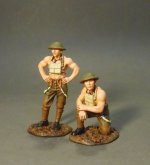
GWB-31
THE GREAT WAR, 1914-1918, BATTLE OF AMIENS, 6th August 1918,
The Royal Garrison Artillery, 2 Crew Resting,
(2pcs)
More to follow..............................
Pigeons played an exceptional role in WWI and WWII. Pigeons were able to fly over enemy lines to send messages to allies all over the continent without the risk of having planes shot down or vehicles destroyed trying to relay that same message. Although many pigeons were killed in the process of transferring these messages, their success was great enough to merit the establishment of the Pigeon Corps in 1915. This group started with 15 mobile pigeon stations, or pigeon wagons, each with 4 birds and a handler and grew in size to over 400 men and 22,000 pigeons by the end of the war.
Pigeons had a small canister attached to their legs that allowed for a message to be inserted and transported back to command posts. This system proved to be the most effective means of transporting important messages as pigeons are incredibly fast fliers and the telegraph system that existed during the war was still not very efficient. Many of these pigeons carried messages that saved the lives of many soldiers, and as a result, were awarded medals for heroism and service to their respective countries. One pigeon named ‘Red Cock’ carried a message that contained the coordinates of a sinking boat that had been torpedoed back to its loft at the command post which allowed a rescue team to be dispatched in time to save the crew. For his services, ‘Red Cock’ was awarded the Dickin Medal for his bravery. This medal is the animal equivalent of the Victoria Cross which is awarded to individuals “for most conspicuous bravery, or some daring or pre-eminent act of valour or self-sacrifice, or extreme devotion to duty in the presence of the enemy.”

GWB-15
THE GREAT WAR, 1914-1918, MOBILE PIGEON LOFT,
(2pcs)

The Dickin Medal is the highest honor that an animal can be awarded for military service, and of the 55 Dickin Medals awarded to animals, 32 of them were awarded to pigeons. Another pigeon named ‘Cher Ami’ had an even more fascinating story. In 1918, 500 allied soldiers were trapped with no food or ammunition in France and were being bombarded by friendly fire. Many men were being killed and there seemed to be no hope of surviving the attack. As a last ditch effort a message was attached to a pigeon which was released and immediately shot down by the enemy. A second pigeon was released with a message and a suffered a similar fate. The final pigeon, ‘Cher Ami’ was then called for. As with the first two birds, a message was attached to its leg and it was released into the sky. ‘Cher Ami’ was instantly shot through the breast and fell to the ground; however, unlike his predecessors, ‘Cher Ami’ got back up and continued to fly another 25 miles, amidst a sky of bullets and the chaos of war, all the way back to headquarters. He delivered the message and was able to save the 194 remaining soldiers from certain death; however, his wounds consisted of a shot through the breast, a blinded eye and a nearly unattached leg. Miraculously, medics were able to save the bird and replaced his wounded leg with a wooden one. For his services, ‘Cher Ami’ was awarded the Croix de Guerre Medal, inducted into the racing pigeon hall of fame, and became the mascot of the Department of Service.


The Royal Garrison Artillery (RGA) was an arm of the Royal Artillery that was originally tasked with manning the guns of the British Empire's forts and fortresses, including coastal artillery batteries, the heavy gun batteries attached to each infantry division, and the guns of the siege artillery.
In the quagmire of trench warfare, it was finally realised that it was not the place for the artillery to be in the infantry line.
Henceforth the artillery would be positioned well behind the infantry battle line, firing at unseen targets, at co-ordinates on a map calculated with geometry and mathematics. As the war developed, the heavy artillery and the techniques of long-range artillery were massively developed. The RGA was often supported by the Royal Flying Corps (RFC) who had devised a system where pilots could use wireless telegraphy to help the artillery hit specific targets.
From 1914 the RGA grew into a very large component of the British forces on the battlefield, being armed with heavy, large-calibre guns and howitzers that were positioned some way behind the front line and had immense destructive power. The corps name was discontinued in 1924, when the RGA was re-amalgamated into the Royal Artillery
Ammunition supply to the Royal Field Artillery (RFA) and other field artillery units was normally the role of the Royal Artillery: that part of the Royal Regiment of Artillery which retained the Royal Artillery (RA) shoulder badges. However during the war the RGA, which had large numbers of men idling in fortified batteries around the World with little chance of seeing action, provided a draft of sub-units to the Western Front to assist with ammunition supply in the field, and the operation of supply dumps
Several of these Artillery crew sets, can also be used with the Supply tank and Trucks.

GWB-31
THE GREAT WAR, 1914-1918, BATTLE OF AMIENS, 6th August 1918,
The Royal Garrison Artillery, 2 Crew Resting,
(2pcs)
More to follow..............................


